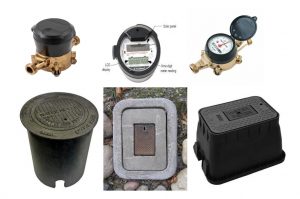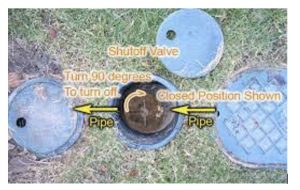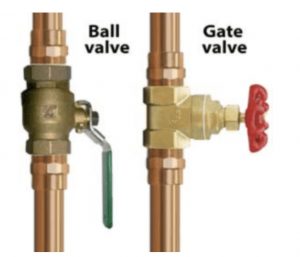
What should you do if you are alerted that your water usage has suddenly significantly increased or receive a message regarding continuous usage?
Our water meters are read monthly. If you get a notice of abnormally high water usage you may already have a very high bill on the way. You can monitor your water usage with a variety of devices. A Google search of “water usage monitoring device” will give several options to fit your particular need.
Nolensville / College Grove Utility District only provides services from the water meter to the road. Any issues from the meter to the private service line and inside the house are the customer’s responsibility. Here’s why: Once water passes through the meter on customer’s side, NCGUD has no way of knowing whether usage is from regular consumption (laundry, filling a pool, watering/irrigation, dishwasher, etc.) or a leak.
There are a few things that you may need to know in order to attempt to diagnose or determine the problem:
These may require that you know the location of:
- Your water meter (it is normally located near the road in a round or rectangular shaped enclosure. The district currently has different versions of Neptune meters installed. So yours may be slightly different than those pictured below. You may want to review the video located on our website at NCGUD.com to get a better understanding of your meter.

- Your irrigation shut off valve (assuming that you have an irrigation system). Typically several feet from the water meter in a hard plastic box in the The valve will most likely be a single handle. When it is in the direction of the water pipe then it is open. When it is perpendicular, it is closed. (However, sometimes these valves are located in unusual places so you may have to get its location from your irrigation company.)

- The water supply valve for your pool or Spa (assuming you have one)
- main water shut-off valve in your

Quite often unexpected high water bills are a result of a leak in the irrigation system. So check this first:
- Close the main water shut off valve in your home by turning the valve Alternatively and almost as good, shut off every water valve in the home. Look at your water meter. If it is still running then you have a leak outside your home. If you don’t have a pool then most likely you have a leak in the irrigation system
- Close the irrigation shut off valve
- If the water meter stops running then you confirmed the leak
- Call your lawn maintenance or irrigation system contractor
Not having found anything continue reading
- Make sure that all inside/outside faucets are turned NCGUD recommends to leave outside hoses unhooked when not in use to prevent a burst in the hose or inside the spigot line – and to prevent particles from backing up into your indoor plumbing from the hose.
- Check underneath all sink cabinets for dampness or
- Being careful with all electrical equipment, check for any signs of possible leaks in the washer and dishwasher, as well as behind the refrigerator (for any signs of a leak in the icemaker line).
- Toilet leaks are not always seen and/or To check the toilets in your home, use this four-step process …
- Take the lid off the back of all toilets (even those used not on a regular basis).
- Drop 10 to 20 drops of red, green, or blue food coloring in the back of each You may also use a dry drink mix (such as Kool-Aid) that is red, green, or blue (one packet per tank). Do not stir or flush.
- Let the coloring sit for 20 minutes, with no stirring, flushing, or
- If the coloring appears in the toilet bowl, there is a If this is the case, once the adjustment, part replacement, or repair is made, test the toilets using this method once again, to ensure that there are no more leaks.
- When the ground is dry, check your front yard for standing water, soft areas of ground, or areas that are extra green compared to other areas of the This may indicate a leak in the service line (from the meter to the house).
- If you have a crawl space, check the plumbing underneath your
- If you have a concrete slab, and you have noticed abnormally warm areas in your flooring, there may be a leak in your hot water
- Once you have checked for a leak and made any needed repairs, you will need to visit your meter to see if it is still indicating a If water is in use or if there is a continued leak, you will notice that the red star on top of the meter dial is spinning. If there is a slow leak, there may not be any activity on the meter. The most accurate way to check your meter is the two-hour method.
- Pick a minimum of a two-hour period of time, when no one will be at home, so there is no water
- Make sure all inside/outside faucets are turned off, and turn your icemaker
- Go to your meter and write down the reading (or take a picture of the meter reading).
- Wait at least two hours with absolutely no
- Check to see if your meter reading has If so, there is still a leak, because with no usage, there is still flow going through your meter. At this point, you will need to check for leaks or contact a plumber.
- If the meter reading has not changed, everything should check out You will still need to periodically check anything with a water source to ensure there are no leaks.
Swimming Pools (and Spas) can have very complicated, head scratching, plumbing systems. There are filters, pumps, salt cells, water supply, fill and suction lines, drains, skimmers, valves, heaters or complicated solar equipment, jets, an auto-chlorinator, etc. There are many places where a leak can happen including the basic structure as a result of age, ground settling, tree roots and pressure. Most often a pool owner will have to rely on a professional leak detection company. Nevertheless, if you are inclined and assuming that neither the irrigation system nor anything in the home is leaking: Shut off the main water supply valve (and everything else) to your pool system. Look at your water meter. If it is still showing flow through the meter you have a problem in the water supply piping from the water meter to the shut-off valve. If the meter is not running you may still have a leak in the pool. Without any fill water going into the pool note if the level is dropping much faster than you would expect with normal evaporation. This could take several days. If so, then you have a serious leak somewhere and need professional help. Do not hesitate to call your pool contractor.
